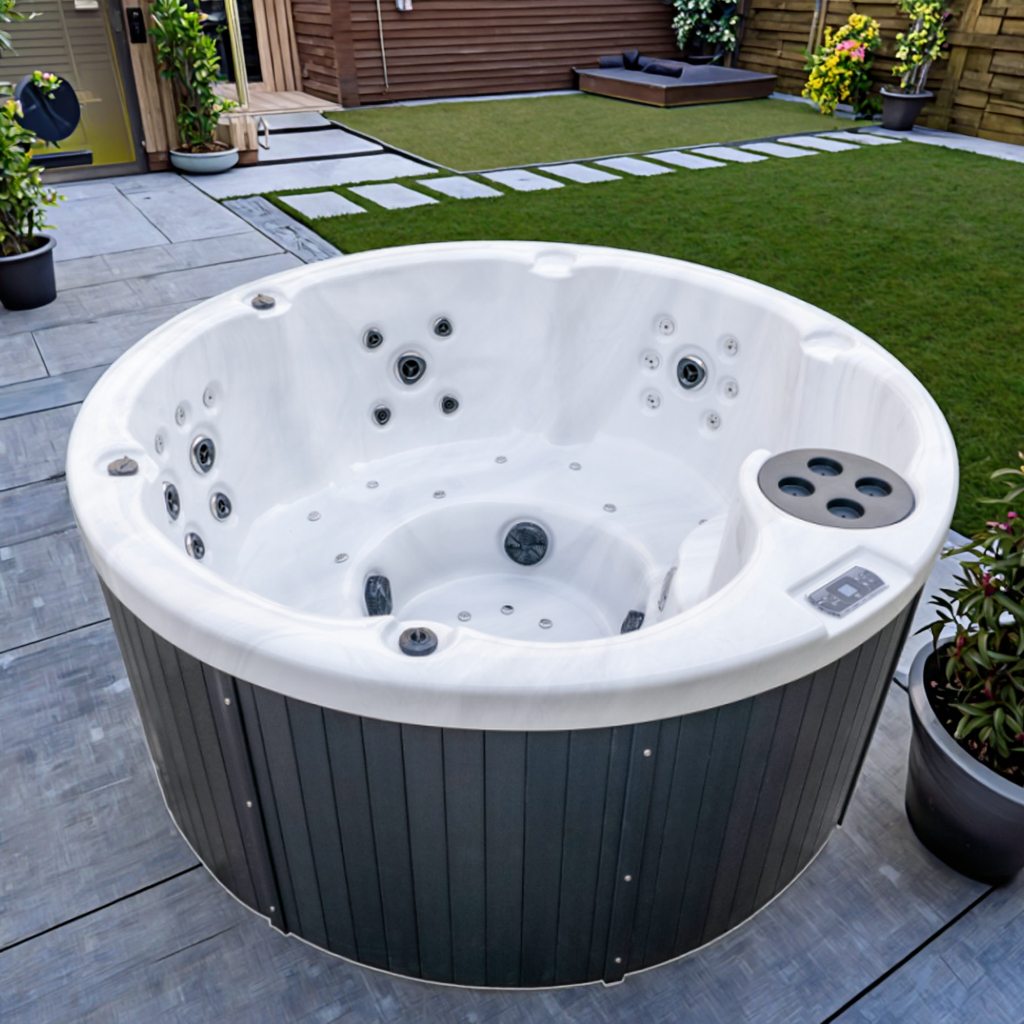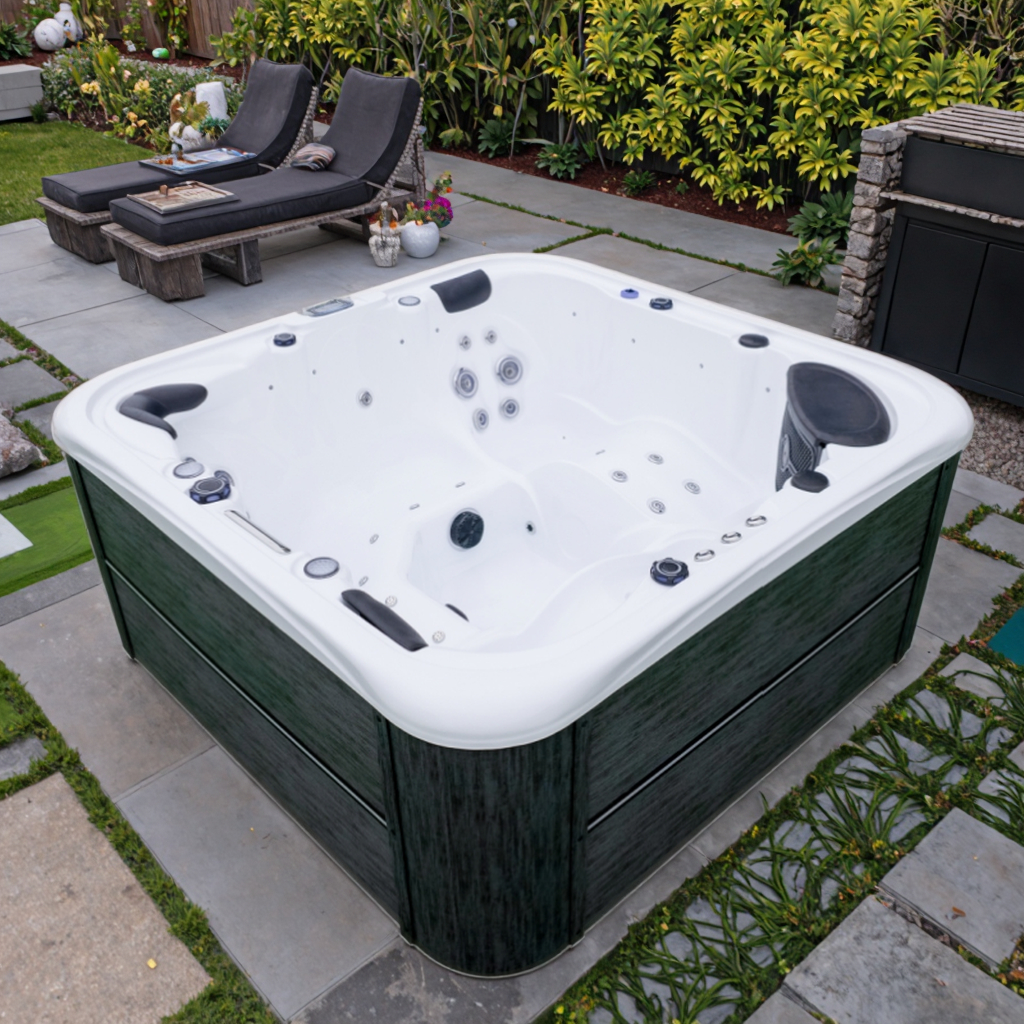
Outdoor Whirlpool Hot Tub: Does the Number of Jet Heads Affect Energy Consumption?
2025-09-30 15:30In modern homes, outdoor whirlpool hot tubs have become a popular choice as a high-end relaxation amenity. These tubs not only provide a relaxing hydrotherapy massage but also help people relieve stress and unwind amidst their busy lives. However, as consumers become increasingly concerned about cost and energy consumption, the energy efficiency of outdoor whirlpool hot tubs has sparked increasing discussion.
The number of jet heads is a key factor influencing the performance and energy efficiency of outdoor whirlpool hot tubs. Many may wonder whether an increase in jet heads directly leads to increased energy consumption. The answer is not a simple yes or no. The number of jet heads is closely related to multiple factors, including the tub's pump power, jet pattern, and frequency of use, all of which contribute to energy consumption.
This article will delve into whether the number of jet heads in an outdoor whirlpool hot tub affects energy consumption and provide relevant scientific evidence and explanations.

Outdoor Whirlpool Hot Tub: Structure and Function
1. Working Principle of an Outdoor Whirlpool Hot Tub
An outdoor whirlpool hot tub typically consists of multiple components, including the tub body, shower heads, a water pump, a heater, and a control system. Its operating principle is that a water pump draws water from the tub and sprays it through multiple shower heads in varying flow patterns, creating a massage effect. Different shower heads can provide different massage styles, such as bubble massage and powerful jet massage, to meet diverse user needs.
The water pump is typically the core driving component of an outdoor whirlpool hot tub. It provides the water flow, circulating it through the tub and spraying it through the shower heads to create the massage effect. The pump's power is directly related to the number of shower heads, as each additional shower head requires additional pump power to maintain the intensity and effectiveness of the water flow.
2. Function and Design of Shower Heads
The shower head is a key component of an outdoor whirlpool hot tub. Depending on the design, shower heads may have different functions and designs. Common jet types include air bubbles, high-flow jets, and gentle massage jets. Each type of jet operates differently and provides different water flow intensities, placing varying demands on the pump and heating system.
Increasing the number of jets generally requires more pump power to ensure each jet operates properly. Therefore, increasing the number of jets can directly impact energy consumption, but this impact is also closely related to other factors.

The Relationship Between the Number of Whirlpool Jet Heads and Energy Consumption
1. The Impact of the Number of Jet Heads on Pump Power
The pump is the power source of an outdoor whirlpool hot tub, and its power determines the water flow rate and jet quality. With each additional jet, the pump must provide more water flow and higher pressure to ensure smooth water flow and an adequate massage effect. Therefore, increasing the number of jets increases the load on the pump, thereby increasing energy consumption.
For example, if a standard outdoor whirlpool hot tub has 10 jets, the pump power might be 1 kilowatt; if the number is increased to 20, the pump power requirement might increase to 1.5 kilowatts or more. This means that as the number of jets increases, the pump consumes more electricity to maintain normal operation.
2. The Relationship between Nozzle Type and Energy Consumption
In addition to the number of jets, the type of jet also affects energy consumption. Some high-pressure jets require stronger water flow and higher pump power to achieve a massage effect, while air-bubbling jets may require less pump power. Therefore, when choosing an outdoor whirlpool hot tub, the type and function of the jets will also affect the final energy efficiency.
The design and function of the jets determine whether the pump requires additional energy to move the water. For example, air-bubbling jets require more air compression combined with water flow, while high-pressure jets require more water flow to provide a sustained massage effect. Therefore, when considering the number of showerheads, users should not only consider the number of showerheads but also the impact of showerhead type on energy consumption.
3. The Relationship between Frequency of Use and Energy Consumption
Increasing the number of showerheads and pump power does not necessarily mean a significant increase in energy consumption in all situations. The actual extent of the increase in energy consumption is also affected by frequency of use. If a user only occasionally uses an outdoor whirlpool hot tub, then even with a large number of showerheads, the electricity consumption will not increase significantly. However, if the user frequently uses the tub and keeps it running for extended periods, the increased energy consumption from a larger number of showerheads will be more significant.
In practice, frequently used outdoor whirlpool hot tubs may require more maintenance and energy efficiency optimization. For example, regular cleaning of the pump and showerheads to maintain smooth water flow and reduce the burden on the pump can effectively improve energy efficiency and reduce unnecessary energy consumption.

How to Optimize the Energy Efficiency of an Outdoor Whirlpool Hot Tub?
1. Choosing the Appropriate Number of Showerheads
When selecting an outdoor whirlpool hot tub, considering the number of showerheads is an important step in optimizing energy efficiency. Users should choose the appropriate number of jets based on their needs. For occasional use, a model with fewer jets can reduce energy consumption. For a more intense hydrotherapy experience, increasing the number of jets may be necessary, but attention should also be paid to matching the pump power to avoid wasted energy.
2. Use an Energy-Efficient Pump
Choosing an energy-efficient pump is a key way to reduce energy consumption. Modern outdoor whirlpool hot tubs typically feature highly efficient pumps, capable of achieving high water flow rates while using less power. By choosing an energy-efficient pump, users can maintain a comfortable hydrotherapy experience while reducing unnecessary electricity consumption.
3. Adjust Usage
Proper usage can help reduce energy consumption for outdoor whirlpool hot tubs. For example, setting a timer can control the duration of use and avoid continuous operation. Additionally, when using a heating system, avoid continuing to heat the water after it reaches the set temperature to reduce unnecessary energy consumption.
4. Regular Maintenance and Cleaning
Regular maintenance and cleaning of the pump, pipes, and showerheads ensures unobstructed water flow, helping to improve pump efficiency and reduce energy consumption. The accumulation of impurities and scale not only puts a strain on the pump but can also cause poor water flow, increasing energy consumption.

What brand reputation does Lovia Spa hold in the global market?
Lovia Spa is recognized as one of the most famous and largest spa brands in China, reaching global markets since 2004. Our brand is known for affordable yet high-quality spas, reliable factory supply, and strong after-sales service.
International buyers appreciate that they can buy from a trusted supplier with low wholesale prices and certified products. Choosing Lovia Spa means choosing a manufacturer and brand respected worldwide for affordability, quality, and supply capacity.
